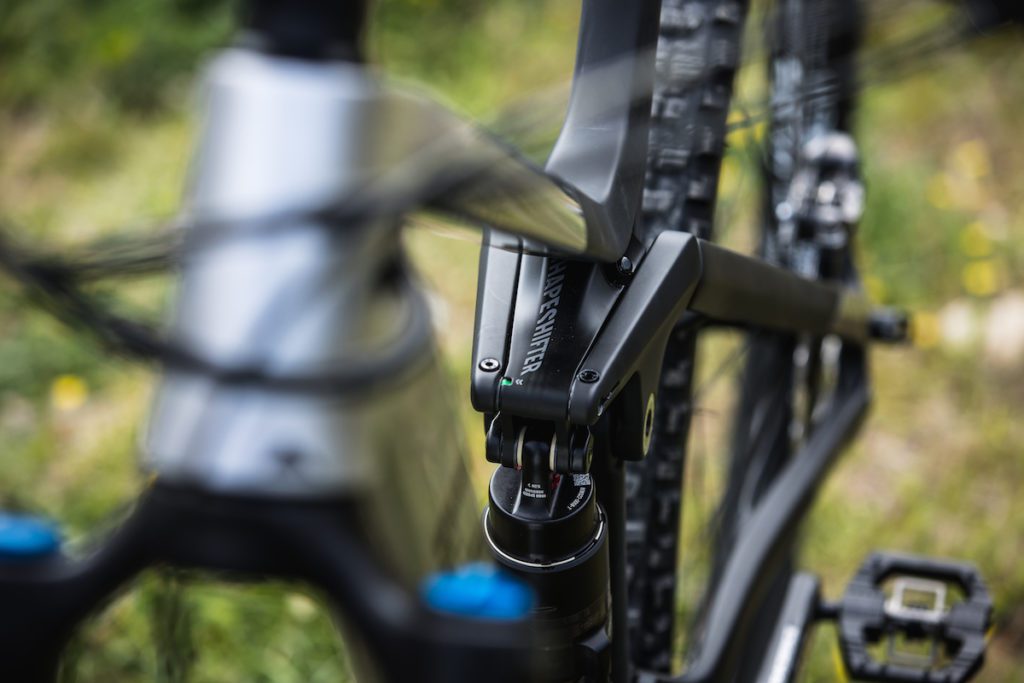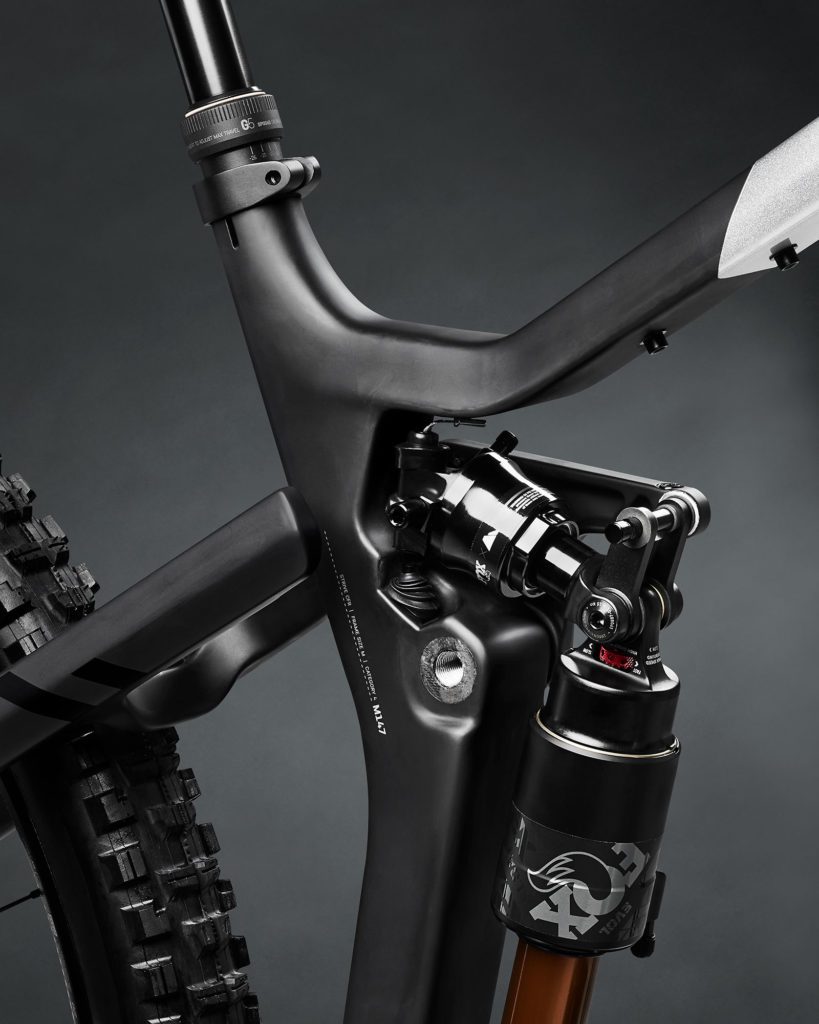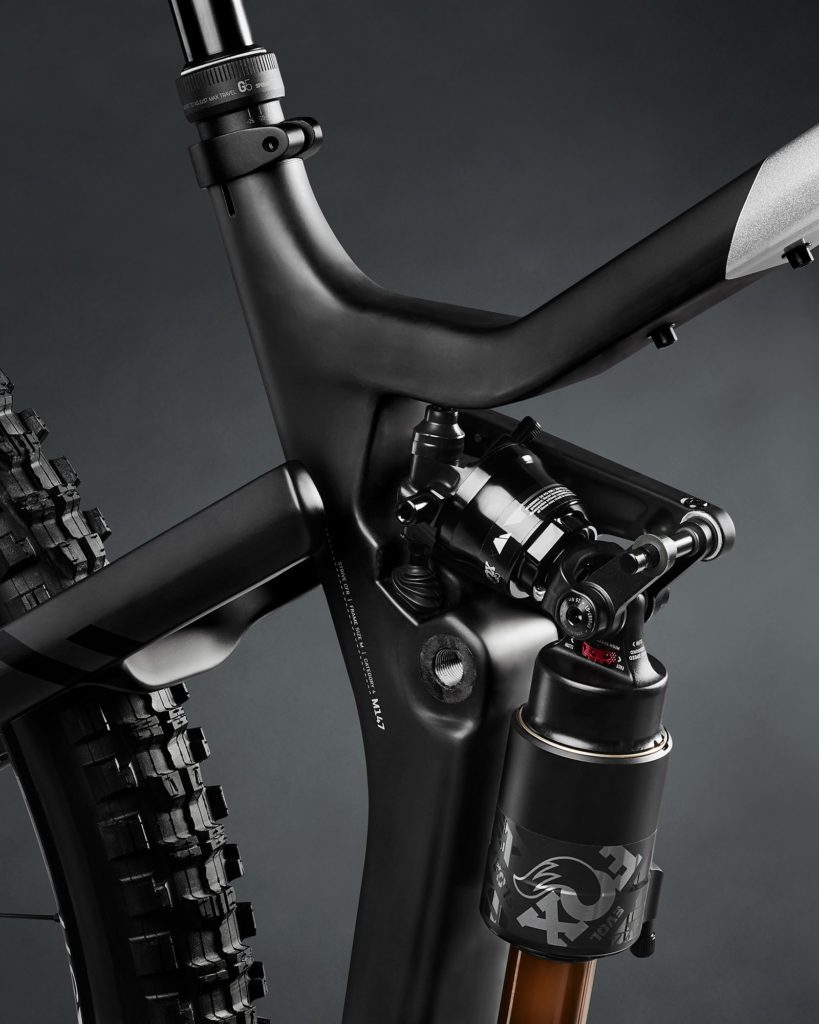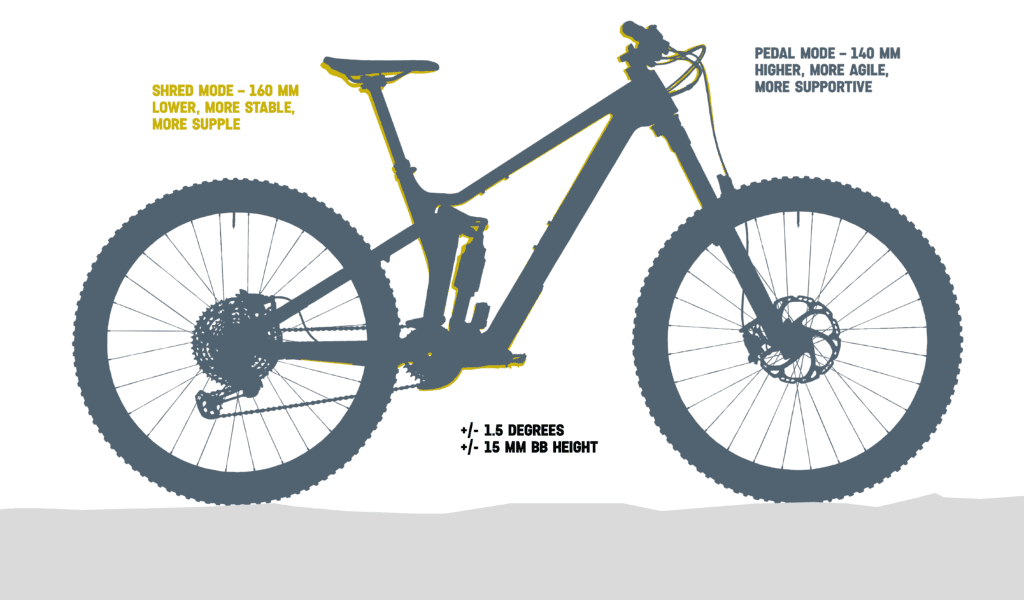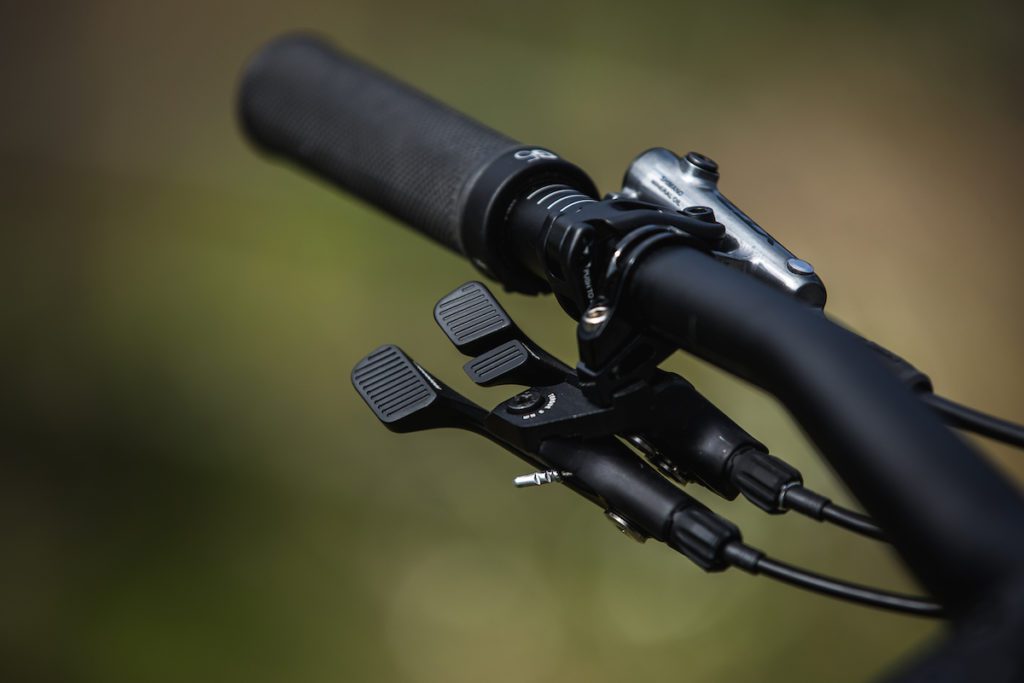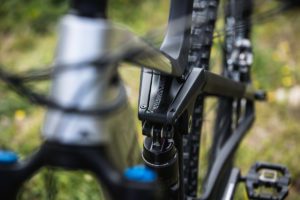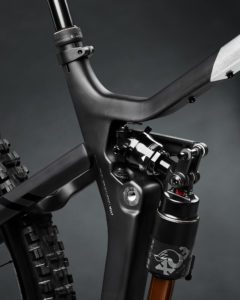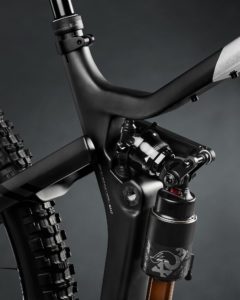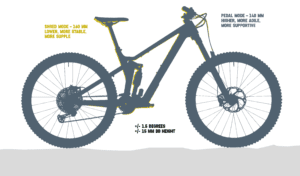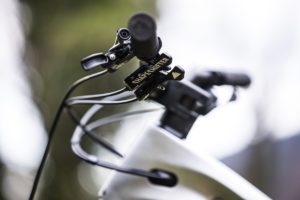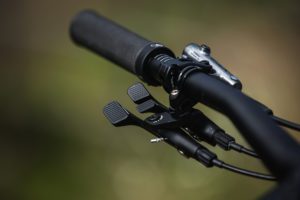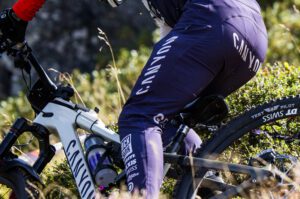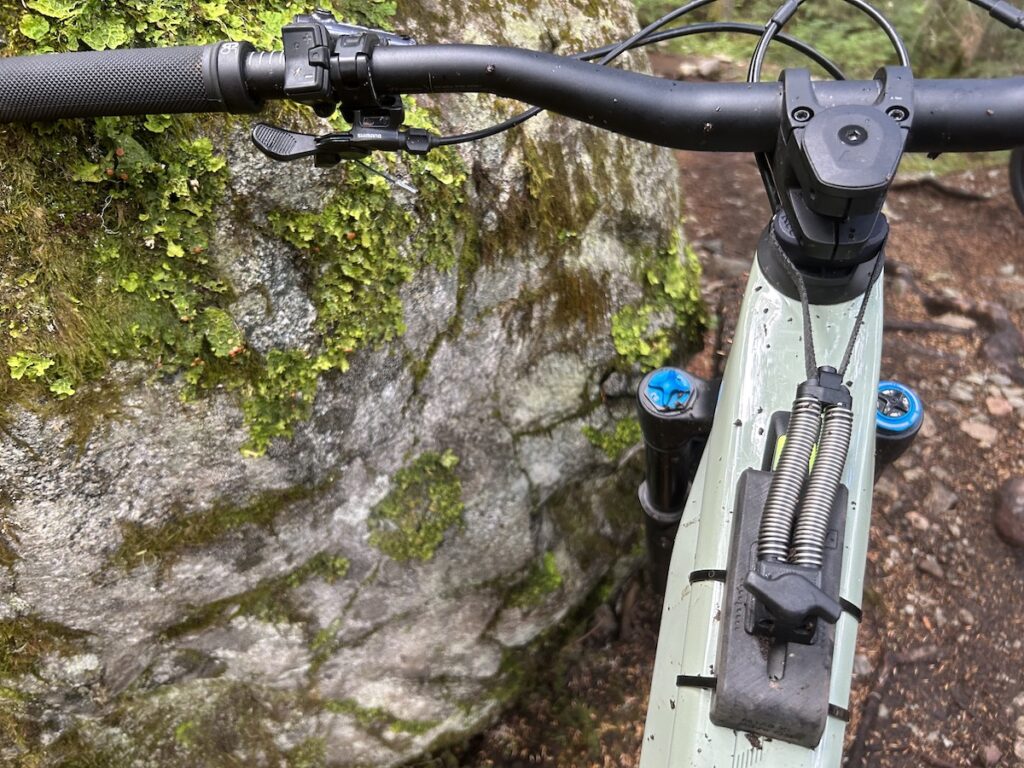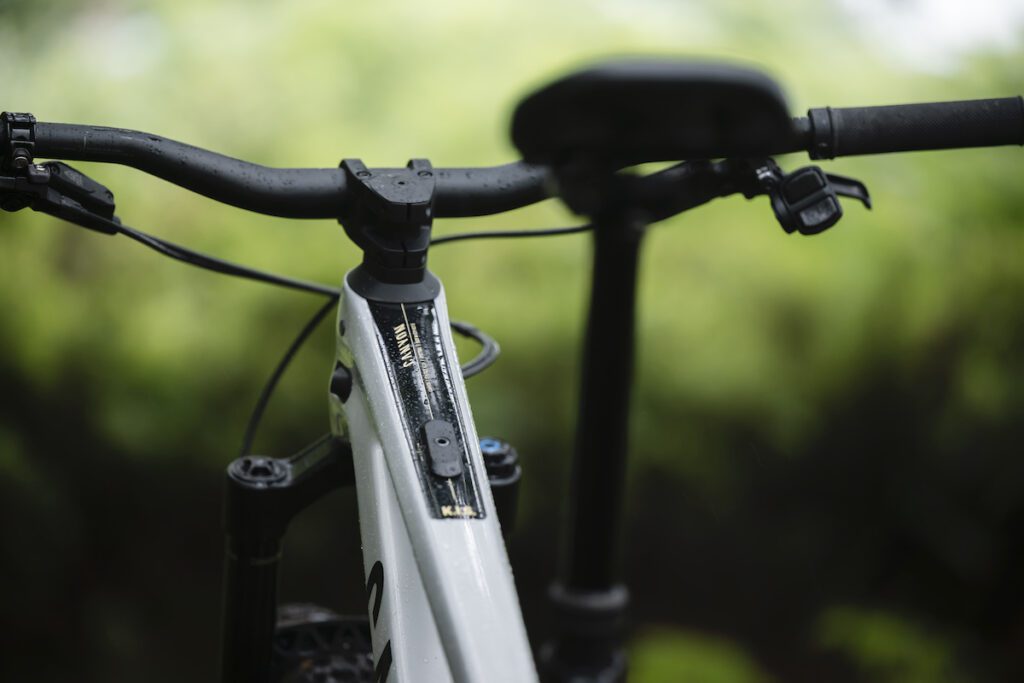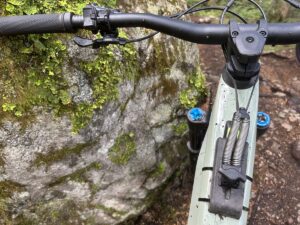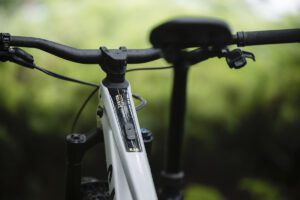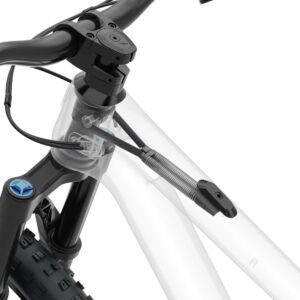Bike Check: Striving for perfection with Jesse Melamed
A deep dive into how Shapeshifter and K.I.S. work for the Canadian enduro champion
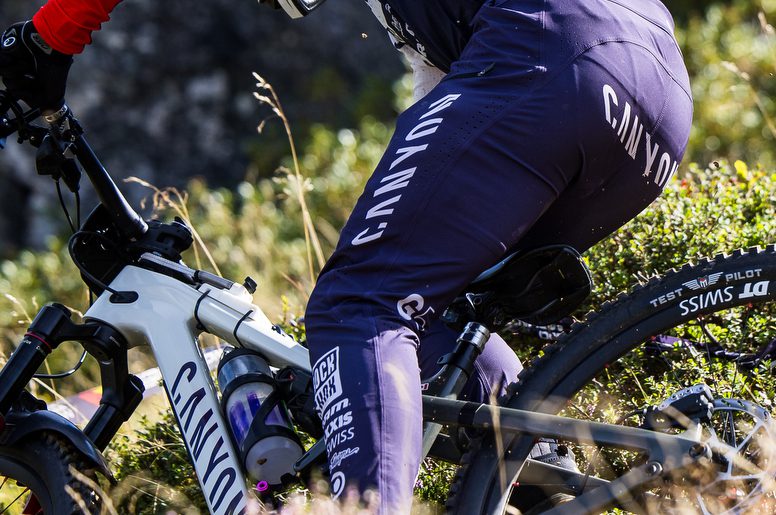 Photo by:
Boris Beyer
Photo by:
Boris Beyer
When Jesse Melamed won the Enduro World Series (now Enduro World Cup) in 2022, it opened the door to a spot on the elite Canyon Cllctv team. With a new team, came a new bike: Canyon’s recently revamped Strive enduro race bike.
The Strive isn’t just any race bike, though. It is built around Canyon’s innovative and, in the EDR world, unique Shapeshifter design. That allows on-the-fly changes to the rear shock’s travel and the bike’s geometry.
With Melamed being notoriously attuned to his equipment, and known to always be seeking to improve his race setup, we wanted to find out what the Canadian champion thought about his new Strive, Shapeshifter and that K.I.S. steering system that the Cllctv has Mcguivered onto Melamed’s top-tube for Canadian Enduro National Championships (which Melamed won) and the Loudenvielle EDR.
We caught up with Melamed just after he landed in Europe to get deep into the details of his 2023 Canyon Strive.
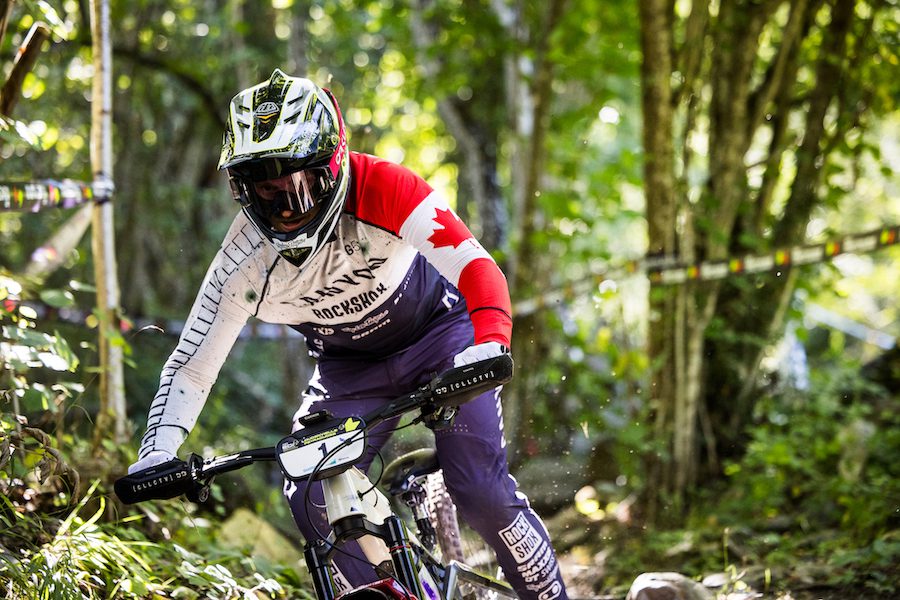
Canadian MTB: Ok, so the Strive is Canyon’s designated enduro race bike but you started the season racing on the Spectral in Derby and in Maydena. What differences between those bikes led you to race the Spectral?
Jesse Melamed: That was mainly because Tasmania has what I thought were mellower trails. That was true for Derby but maybe not true for Maydena. I had the right bike for one of the races but not the other, but I think it went reasonably well.
The Spectral seemed just a little bit more agile and was a little bit lighter. Just more of a trail bike than an all-out brawler and I didn’t think I needed a brawler. I wanted a bike that was more of a little weapon to sprint out of every corner. There weren’t so many bumps and rough patches to manage in Derby. In Maydena, I wish I’d had the Strive. If I could go back and change that I would, but at least it worked for Derby and I had a podium there.
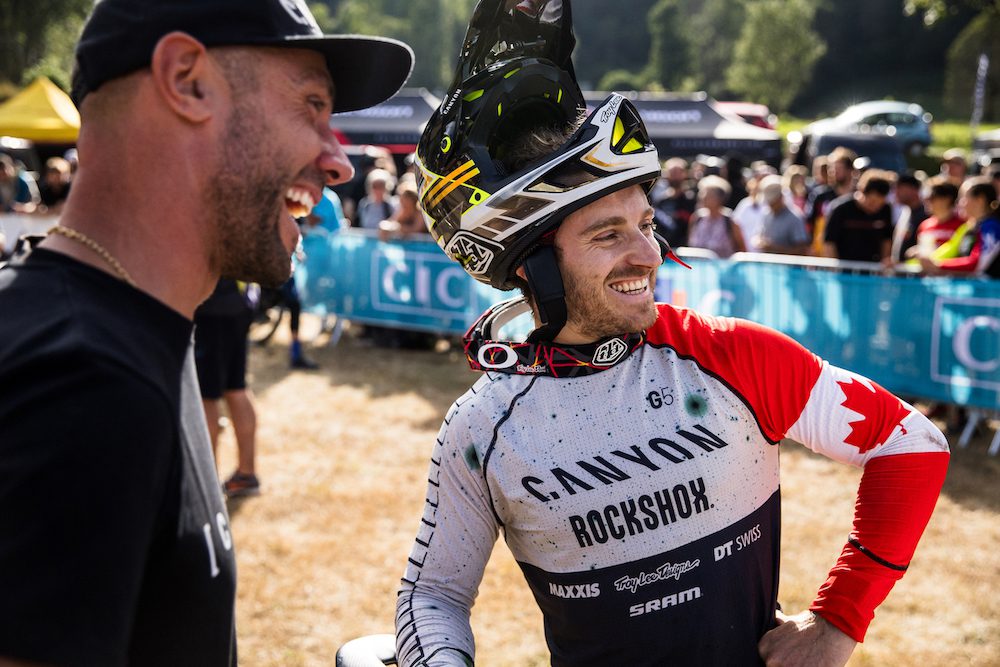
You were with one team for a long time and had some influence, or at least input on the design of your race bike there. How has it been switching to Canyon Cllctv? Do you have freedom to play with the bike or are you racing a basically stock bike?
There’s definitely some room to make some changes, which has been great. That’s actually part of the reason I made the switch. Going forward, I feel like there’s a lot more ability to make the changes that I want to see. On my previous team, I made what changes I could, but I didn’t have much say in the stock bike. I think obviously, joining a new team it is always going to take time and I didn’t expect it to change right away. But from the get-go, I’ve had a lot of help from the engineers and Fabien (Barel) and everyone on the team. we’ve done a really good job to get me settled on the Strive.
So, the Main feature of the Strive is the Shapeshifter. As someone who’s always trying to perfect your bike setup, how are you getting on with that? Was there an adjustment period or was it very intuitive?
It’s very intuitive. I think the adjustment period was learning where a new lever is. I think in the beginning I would go for the dropper or shapeshifter and was sometimes having to double-think between which one I was pressing. But in terms of actually using Shapeshifter, I love it.
For enduro racing and in training, we do really big days all the time. That just consists of long pedal climbs. Putting the shapeshifter on makes the Strive feel more like my XC or trail bike. It puts you in a better position that gives you that feeling of wanting to push more. It makes the slacked-out enduro bike feel a little bit more lively on the climbs, which I really enjoy.
Was there any trepidation about adding another new feature to learn to an already new-to-you bike?
Luckily, I started on the Spectral so I got used to that and everything else that was new. Then when we moved to the Strive all we had to add was the Shapeshifter, so it wasn’t as big a deal. And, like I said, now that I have it, it’s hard to imagine not having it on a bike.
How are you using the Shapeshifter in a race situation? Is it just something you use for climbing in transfer stages? Or are you also using it during race stages?
Yeah, if there’s a long enough pedal section in a stage, I’ll use it. I used it in Pietra (Ligure) when I won there. I used it in Canazei for sure. Leogang, I’m not sure. We don’t always have big pedalling sections in the stages but when there are big enough pedaling sections that aren’t rough, yeah, I’ll use it. I think it’s another huge advantage – it just saves a bit of energy.

There’s a lot of focus on the Shapeshifter as it’s something that no other bike has, really. But is there anything else you think sets the Strive apart?
I just think it does everything really well. I don’t want to bash my old program, and there was really nothing wrong with that bike, obviously, I won a world championship on it. But there was a few areas where the Strive performed better, I thought.
I’m kind of a late braker. I like to go fast in a straight line and brake as late as possible. The braking is really good on it. I remember the first time I hopped on it I just thought the suspension platform just seemed to work really well, it was really dynamic and it made me want to push into the trail more and feel the bike work. It’s responsive but settled it … it just does a lot of things right.
It takes time to get up to speed on a bike no matter who you are or what bike it is. But as I was getting up to speed on the Strive I felt like there was a lot of room for me to grow. Even still, I’m finding the bike can handle more, I just need to figure out give it to it.
Are you running the bike stock, other than sponsor-correct parts? Or have you made modifications anywhere?
We’ve made some modifications, yeah. I’m not sure how much I can talk about them but they’re there. For a keen-eyed observer, they can see it.
One modification at Crankworx/Nationals that was kind of hard to hide was the KIS system mounted on the top tube. What made you decide to run that in the race?
I’d had some requests from Canyon and I’d seen Troy (Brosnan) run it so I thought I’d give it a shot. I put it on my bike and it kind of surprised me. It’s still something to get used to but I put it on probably the week before Crankworx and liked it enough to keep it on for the race. I obviously did well there, so I don’t think it held me back in any way.
It is another thing that I have to learn and understand where it’s working. Basically where I have to pay more attention and where I have to pay less attention. I’d put it down to 10 per cent of the time I don’t like it and maybe 40 per cent of the time I don’t notice it and 50 per cent of the time its better. In my head, I think that means it’s going to stay on my bike.
There are a lot of aspects that, once I get to learn it better, I think that i’ll really get the most out of it. And hopefully get rid of that 40 and 10 percentages of not liking it or it not doing that much. I think it’s an interesting concept and it seems to help.
The system lets you adjust how much resistance there is. Not on the fly, but it’s something you can adjust during a ride. How were you using it during the race? Was it set in one spot or were you adding more (or less) stabilization for different parts of the day?
We had a really long stage where I put it on tighter, so I had more damping for that long stage. The theory was that I could rest my hands a little more and not have to put so much input into keeping my bike straight and me going into a straight line. I think that helped. On the more loose, bike park-y stages I loosened it off a tiny bit because I found I wanted to make more micro-adjustments in the corners. Then on the more natural trails that I really knew well I had in what I’d consider a neutral position of resistance.
It feels pretty interesting. It’s not nothing, and you kind of feel it working sometimes. I don’t know, it just feels cool.
What advantage were you looking to get out of the K.I.S. system? Did that work out as you expected? Or were there surprises?
There’s a couple. I think for the longer stages it should help save some energy and allow me to push more and have more to give at the final metres of each stage. I do think that it helps calm my riding down a little bit. And I’m able to kind of smear my bike around corners a little bit better. We’re always on and centered on our bikes. When you put that steering input it in it kind of connects the front end of the bike to the back end of the bike – it just feels like you’re riding on rails. It’s kind of an interesting feeling.
I was noticing also under hard braking and over skittery bumps where your bike might be swapping out, it seemed to be more controlled and planted. There’s definitely a lot of benefits from it.
Is that system something you’ll keep experimenting with at the World Cup? Or is it coming off for the EDR races?
No, It’s on my bike still. It’ll be on my bike for Loudenvielle. I do want to keep experimenting with it. Canyon has told me there are a bunch of permutations of it that we can play around with. So hopefully I’ll get to play around with that and make it work for me all the time, and be something I’m happy with all the time. So I imagine I’ll just keep running it.
Last question. It’s a long EDR season this year and there is a long break between the last race in June and the next race in late August. Did that give you more time to dial in and get used to the Strive? Or were you already pretty much set before the break?
It’s not really the bike that I’m having to get used to now. It’s more the new sponsors that I have. It’s a whole new catalog of options with what they offer. That’s taking some time to dig into and test all the options I have. I’m happy with where I’m at, but it’s more that I want to keep trying every option that I have just to make sure I’m on the best option or if I can find something better. That’s going to go on the rest of this season and into the winter just because there are a lot of options for combinations of things like, wheels and tires and suspension and everything like that.
